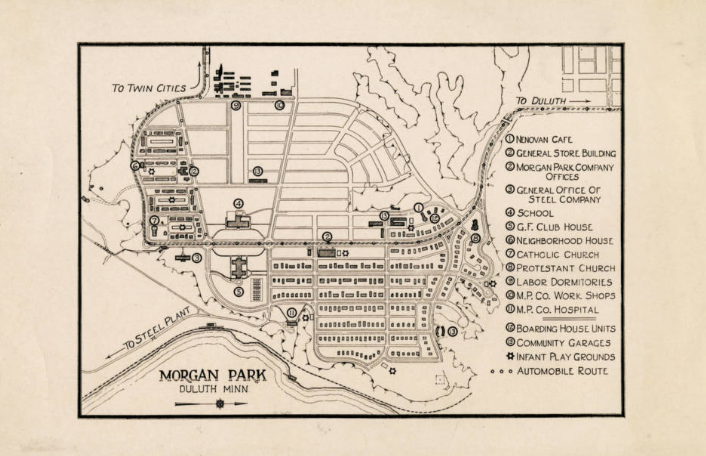PDD Quiz: History of Morgan Park
This week’s quiz is the first in an occasional series that will focus on the history of Twin Ports neighborhoods; please sound off in the comments on other neighborhoods that you’d like to see covered!
Zenith City Online, the Northeast Minnesota Historical Collections at UMD’s Kathryn A. Martin Library, and Arnold R. Alanen’s book Morgan Park: Duluth, U.S. Steel, and the Forging of a Company Town were invaluable sources of research for this quiz. Even more historical photographs of Morgan Park from the Northeast Minnesota Historical Collections can be accessed at Minnesota Reflections, a digital collection of historical materials.
The next PDD quiz, reviewing headlines from March 2019, will be published on March 31. Please email question suggestions to Alison Moffat at [email protected] by March 27.
Results
You’re a local history buff! Well done!
Recommended Links:
Better luck next time!
Recommended Links:
#1. Morgan Park was named after this steel magnate.![]()
In addition to his steel interests, James Pierpont Morgan also helped establish General Electric, AT&T, and International Harvester.
#2. Morgan Park was designed in 1913 as a company town for employees of which company? ![]()
The Minnesota Steel Company, a subsidiary of U.S. Steel, oversaw operations in Morgan Park.
#3. Many of the houses and municipal buildings in Morgan Park were notable for their use of what building material? ![]()
Concrete was seen as durable and easy to maintain. It was also cost-effective, as cement was produced in the adjacent Universal Portland Cement plant (also owned by U.S. Steel). Read more about Universal Portland Cement on Zenith City Online.
#4. Morgan Park’s neighborhood clubhouse, constructed in 1917, was known by this name.![]()
Read more about the Good Fellowship Club on Zenith City Online.
#5. Which Morgan Park building is pictured here?![]()
Morgan Park Hospital was demolished in 1934; read more about its history on Zenith City Online.
#6. The Lake View Store, constructed in 1915, is widely considered to be the first modern what?![]()
Read more about the Lake View Store in this PDD post.
#7. Morgan Park’s curvilinear boulevards, radial streets, and prominent placement of municipal buildings reflected an urban planning movement known as what? ![]()
An urban planning movement developed in the late 19th century, the City Beautiful philosophy emphasized aesthetic design as a means of building civic engagement.
#8. In what year was the Morgan Park School demolished? ![]()
Read more about the demolition and the history of the school, built in 1916, in this PDD post.
#9. Which of the following was NOT a nickname for neighborhoods within Morgan Park? ![]()
“Hunkyville” was the pejorative nickname for the low-income western neighborhood; “Pig Pen” referred to the eastern neighborhood (Alanen, p.79). “Silk Stocking Row” referred specifically to upscale Block 1 in the eastern district, where the steel plant executives and managers lived (Alanen, p. 149).
“Slab Town,” incidentally, was located in Duluth’s West End. Read more about it on Zenith City Online.
#10. This Morgan Park church was demolished in 2017. ![]()
Read more about the church’s history and its demolition in this PDD post.
Recommended Links:
Leave a Comment
Only registered members can post a comment , Login / Register Here


















1 Comment
Bret
about 6 years ago